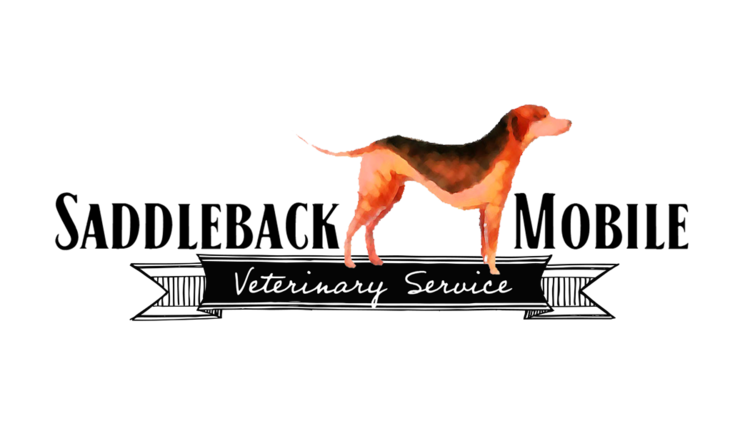I remember one summer at the lake when I took a mud wad to the face with my eyes open. There was another time when I took a tennis ball to the eye. I learned several things from these experiences: don’t play tennis, mud fights are not worth it, and most importantly - eye problems are extremely painful!
Danny has his left eye half closed when compared to his right eye. He also observed my white truck and stethoscope.
Since becoming a veterinarian I have learned that some owners prefer to wait for an issue to resolve before scheduling an appointment and owners also do not perceive their animals to be in pain. When it comes ocular conditions my rules of thumb are: the issue can never be checked soon enough or often enough until it is resolved. If the eye is improving by the day (less squinting, less tearing / discharge, less cloudiness) then it is healing. If the level of squinting or tearing is staying the same then a recheck is needed ASAP. Cloudiness is bad. In horses cloudiness or a cloudy discharge is REALLY bad.
Here are some definitions when it comes to talking about eyes for all of you vet. med. curious folks:
cornea - the clear outer membrane of the eye made up of an anterior and posterior membrane. The cornea is clear because there is no blood supply - it receives its nutrients through diffusion. The cornea is sensitive when touched because there are branches of the ophthalmic nerve have endings on the cornea.
sclera - the white part of the eye surrounding the iris and cornea
iris - flat ring of tissue in the eye that adds color, constricts in bright light, and dilates in low light. The color of the iris is determined by how many melanin containing cells are present in the outer layers of tissue. Lots of melanocytes - brown eyes, fewer melanocytes - tan / yellow, even fewer melanocytes - blue, no melanocytes (albinism) - red
pupil - opening in the center of the iris
conjunctiva - pink mucous membranes surrounding the globe of the eye
conjunctivitis - irritation or infection of the conjunctiva
iridic granule - collection of cells present on the dorsal portion of an equine cornea.
corneal ulcer - a break / abrasion in the cornea.
Fluorescein stain - a stain used to test for the presence of a corneal ulcer
Fungal keratitis - a fungal infection within a corneal ulcer to which horses in warm and humid environments are very susceptible. Fungal keratitis is a big reason why any squinting horse needs to be seen by a veterinarian as soon as you notice the squinting. Horses or other animals that eat hay such that they create a hole in a round bale to get to the center of the bale are at increased risk for corneal ulcers and fungal keratitis.
epiphora - overflow of tears onto the face
blepharospasm - involuntary tight closure of eyes
He is being good by allowing an ophthalmic exam without sedation.
I had a farm call the other day to see an accident prone horse named Danny. It was clear on first observation that Danny was keeping his left eye half closed and he had some tearing present. Danny allowed my exam after I applied a topical anesthetic to his eye. I applied some fluorescein stain - no stain uptake was present on his cornea. I flushed each inner eyelid with saline solution to check for dirt / foreign material. None was found. Two days and twice daily eye medication later Danny was back to normal. Thankfully I did not have the opportunity to discuss lengthy medical treatment or referral to Charleston’s veterinary ophthalmologist with Danny and his family.
Foster and all three of his legs helped with moral support during the entire process.
Links of interest:
AAEP information sheet for horse owners regarding eye problems
http://www.aaep.org/info/horse-health?publication=765
Link for Dr. Cook and her awesome team at Animal Eye Care of the Lowcountry
Dyce, Sack, Wensing. Textbook of Veterinary Anatomy third edition, Saunders. Copyright 2002, 1996, 1987 Elsevier Science.



